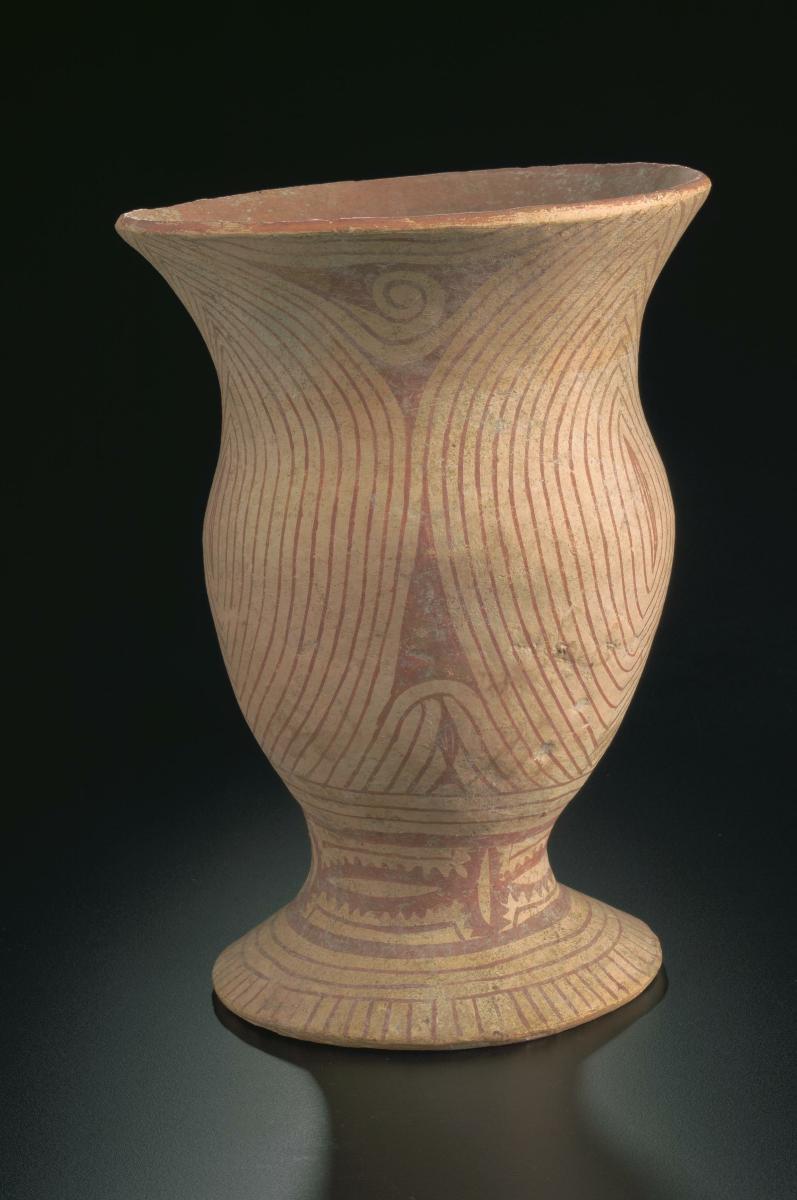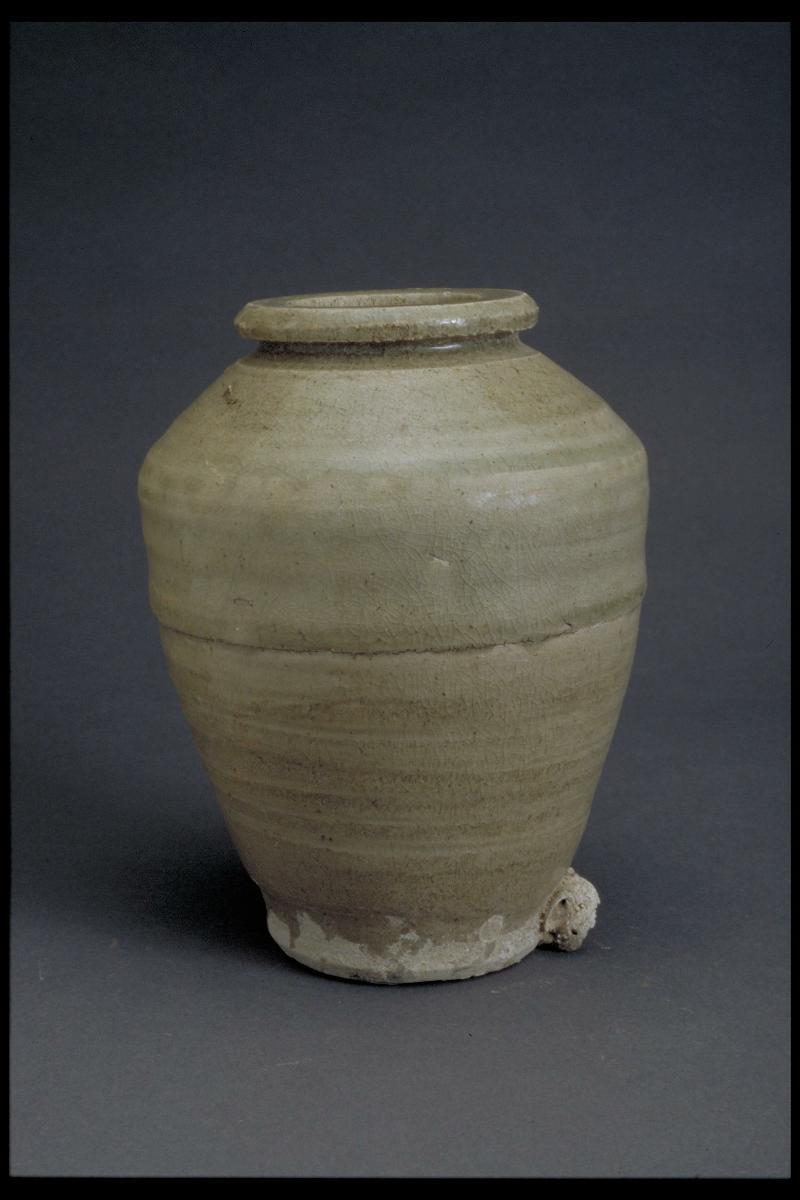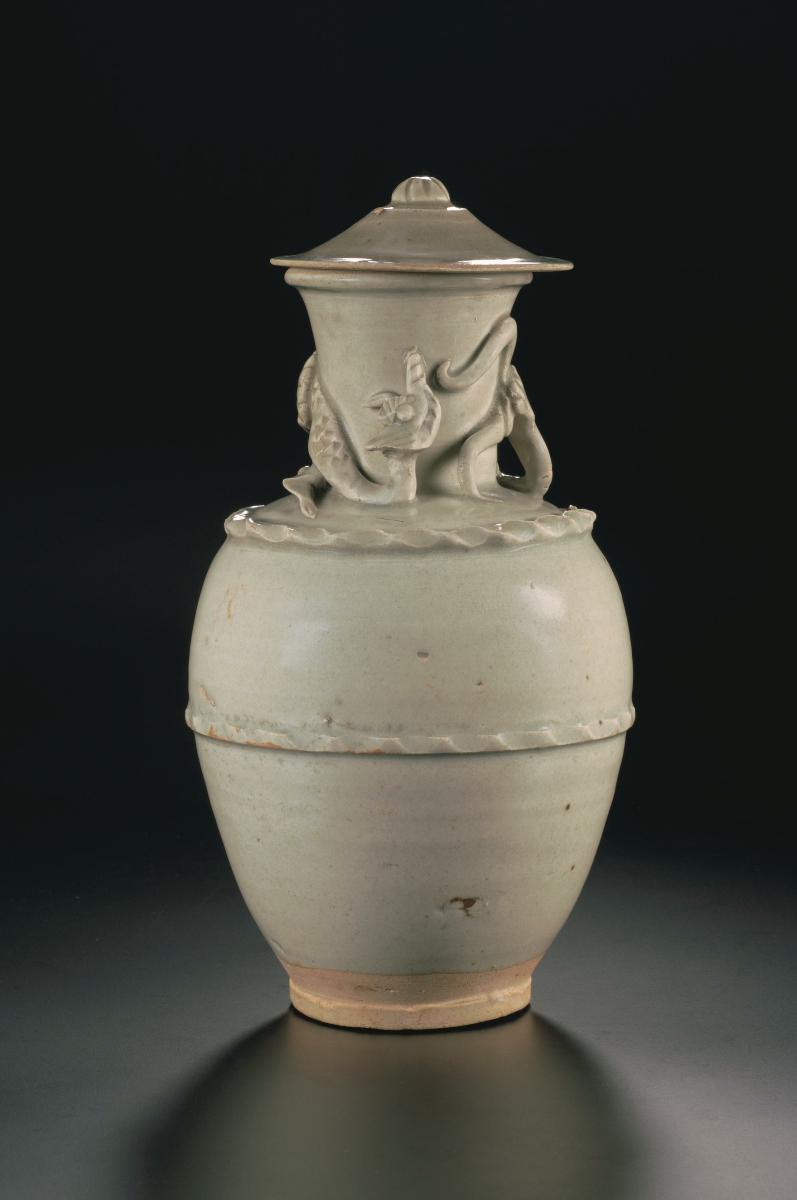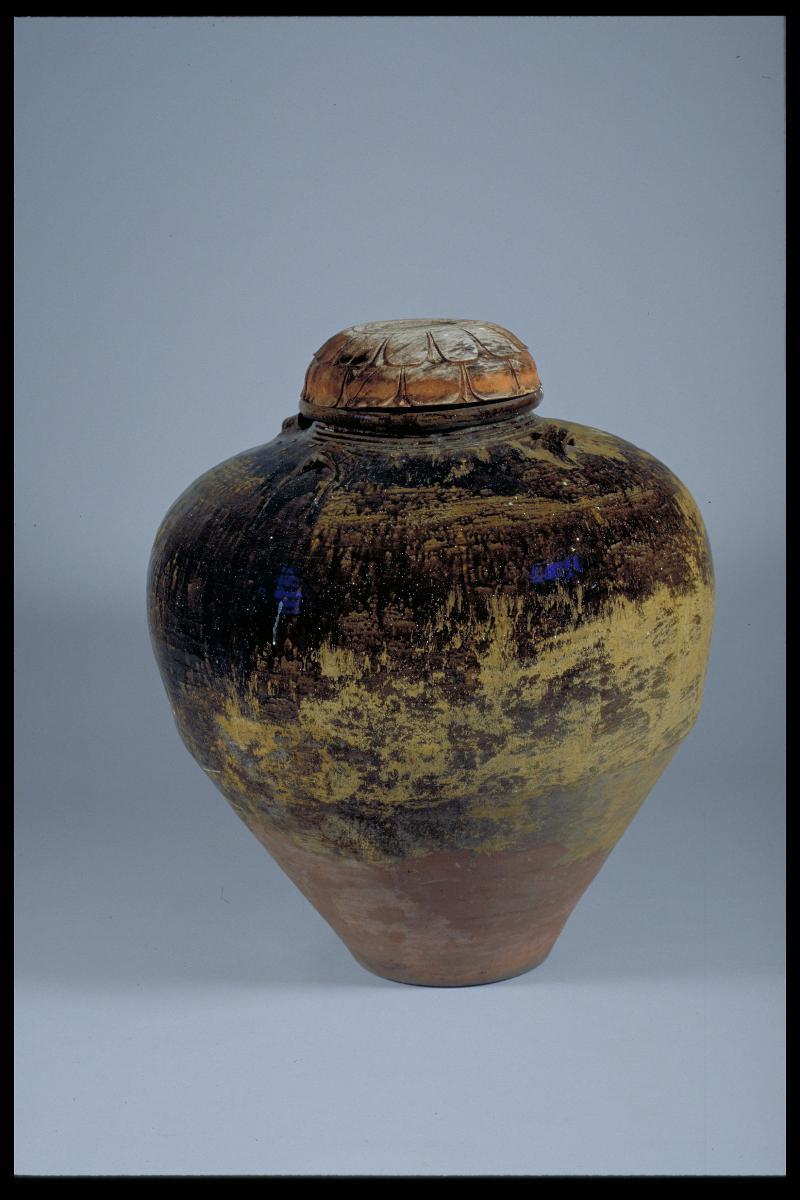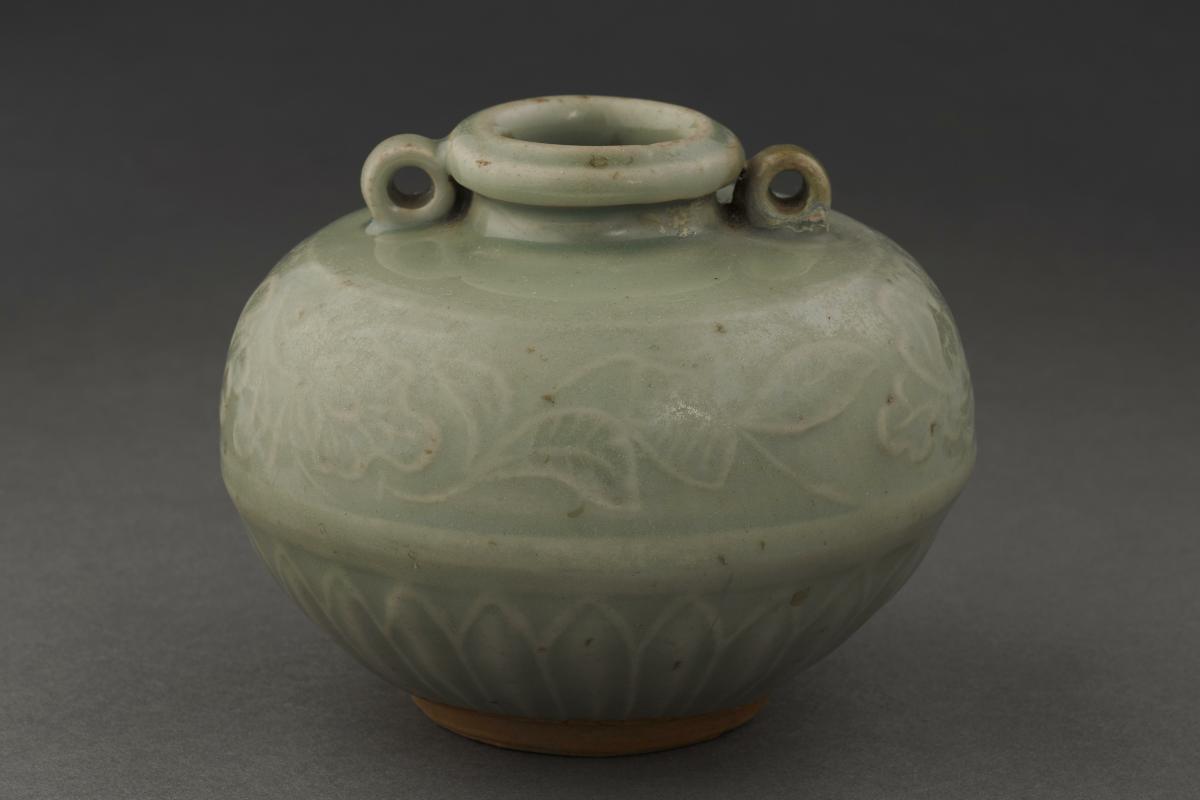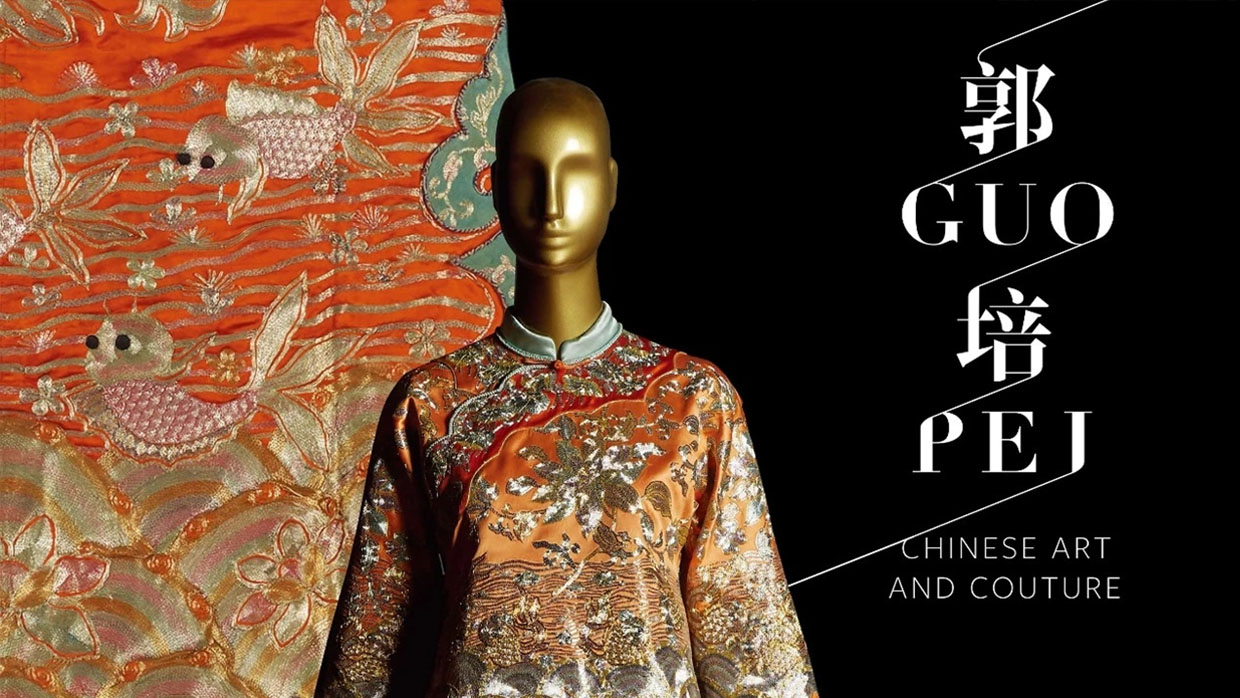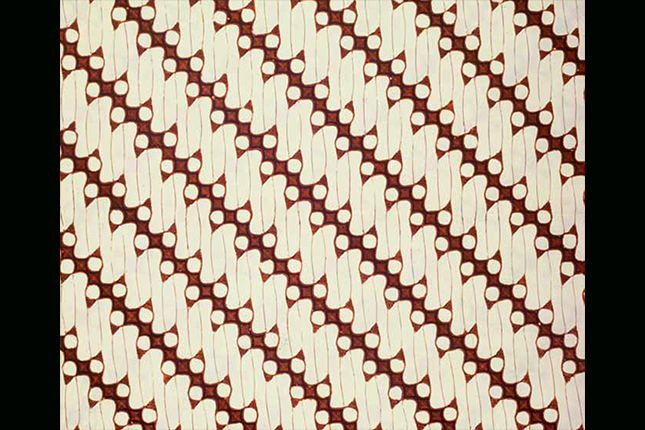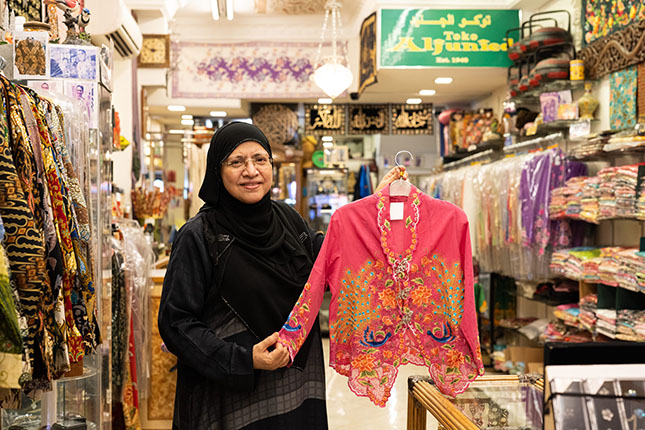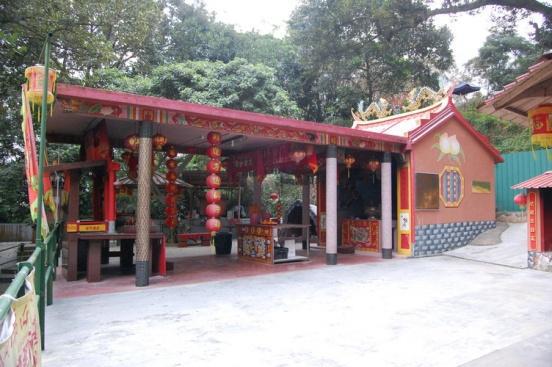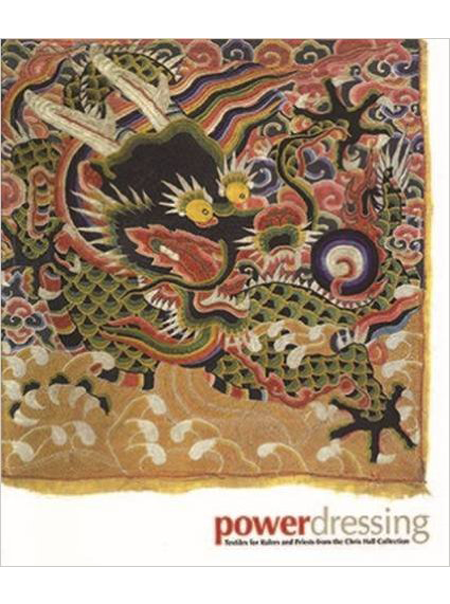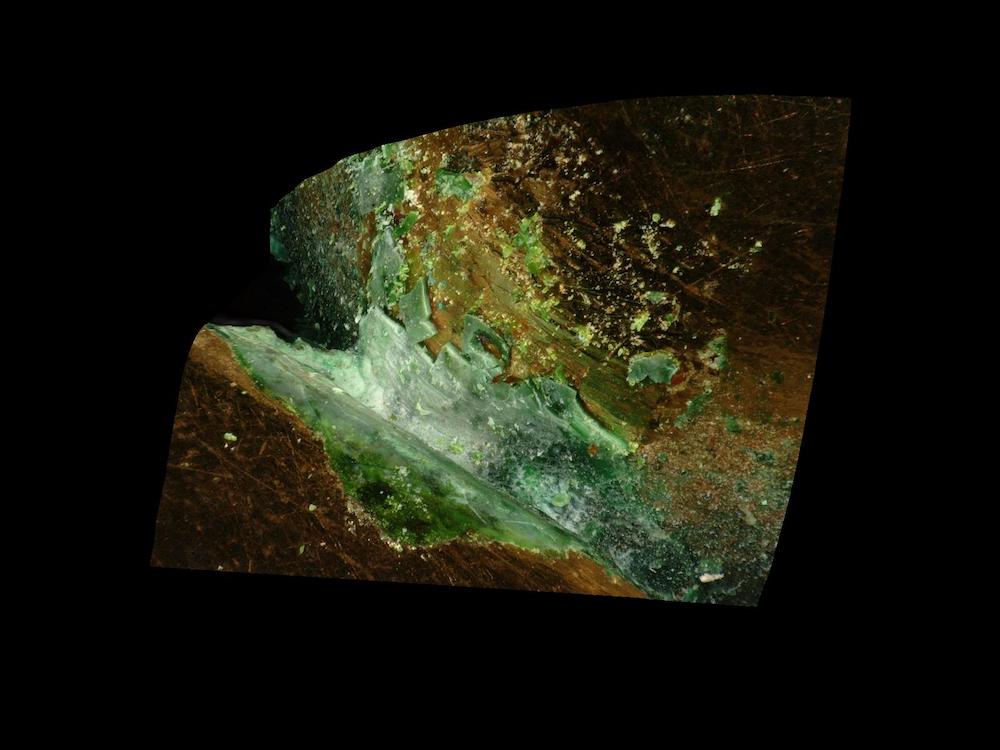This tall, earthenware jar with flared foot has painted, red slip (liquid clay) decoration.The site of Ban Chiang was first discovered in 1957. Pottery was found with skeletal remains, glass beads as well as iron and bronze bracelets. Recent dating methods suggest that there were three main phases of pottery-making in this culture, with the red slip-decorated wares falling within the most recent phase (300 BCE to 300 CE).Painted vessels such as this were probably not used as everyday ware in the Ban Chiang culture. The intricately painted decoration, raised foot, and elaborate shape suggests a ritual use. These vessels were probably used as burial jars to contain either food or objects for the decesaed in their afterlife.




